The Best Places for Chinese Evergreen Plants for Optimal Care and Feng Shui Benefits
Also known as the Poison Dart plant, Chinese Evergreens are commonly grown as a low-maintenance houseplant. Most varieties offer striking patterned foliage, and you’ll often find it on lists of Feng Shui plants. While it can work well to introduce more energy into the home, Chinese Evergreens still need placement with their care preferences in mind. Find the right place in the home where the Chinese evergreen plant will both thrive and produce the best effects, according to Feng Shui at the same time.
Where to place Chinese evergreens in the home – the essentials
Chinese Evergreens grow in almost any part of the home with indirect light, but Feng Shui principles say that it is best placed in the southeast, north or east parts of the home. Keep it away from the center of the home and away from exits or entrances where drafts are common for optimal plant care.
On Chinese Evergreen Plants
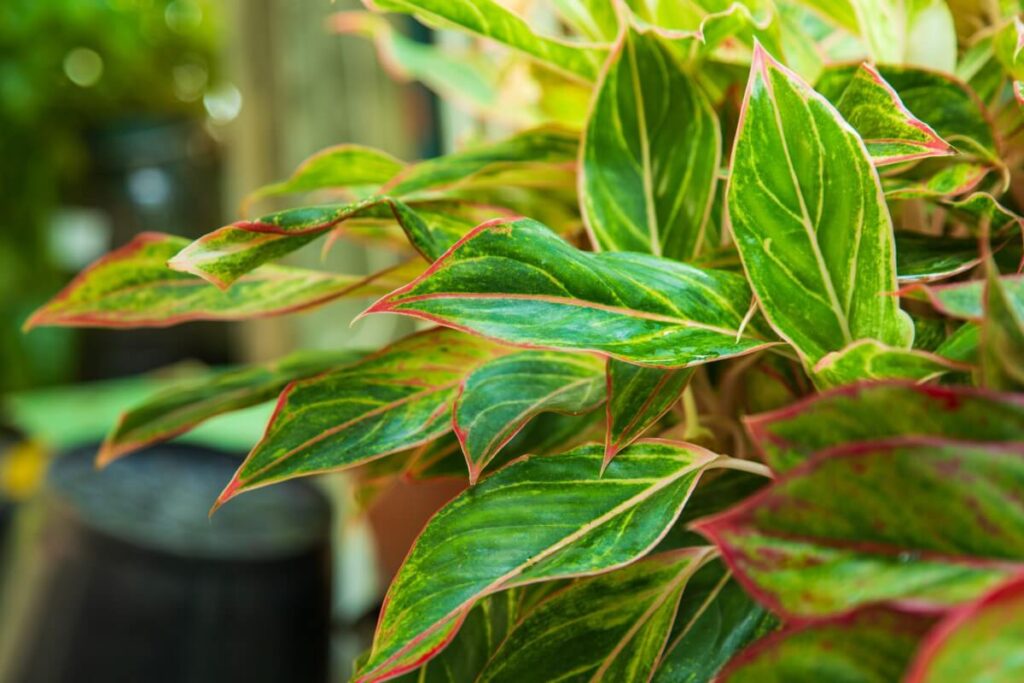
Chinese Evergreen is a genus that includes nearly two dozen plants, but the Aglaonema commutatum species is most commonly grown as a houseplant. The other species may be too large for indoor cultivation or need more humidity than is practical to supply inside the home. This variety of Chinese wintergreen is native to the Philippines and the islands of Indonesia.
It has naturalized in many subtropical and tropical areas, including Cuba and Bangladesh. This genus is part of the Araceae family, making it distantly related to many other popular houseplants.
In the wild, Chinese evergreens grow in tropical areas where they are part of the understory of taller trees and shrubs. This keeps them out of direct sunlight most of the time and encloses the plants in a humid and warm environment at all times.
They are not exposed to cold temperatures or direct winds, so they cannot handle these conditions in your home either. Providing moisture and warm temperatures is more important than providing light, making this plant a good choice for many areas of the home.
Aglaonema will adapt well to more home conditions as long as you use the right soil mix.
Chinese evergreens and Feng Shui
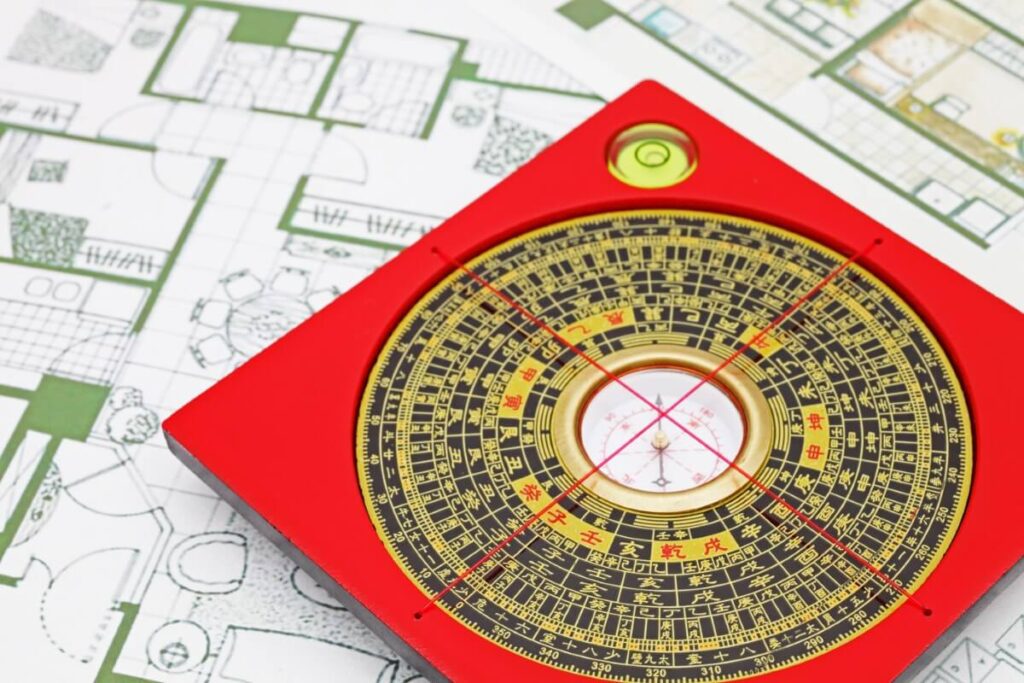
Chinese evergreens were first domesticated in China and have been kept as houseplants there for centuries. Since Feng Shui is an ancient Chinese practice that aims to generate energy and guide where it flows, this plant likely has a long history of being used as part of it. In general, the Chinese evergreen plant is associated with symbolism such as:
- Good luck
- Wisdom acquired from growth and age
- Beauty and grace
- Positivity
- Purity and innocence
- Patience and hard work.
As one of the few plants actually used in the traditional form of Feng Shui, Chinese Evergreens have their own elemental association. Most live potted plants and dried plant material are considered to represent the wood element, which provides stability, strength and steady growth.
Chinese Evergreens are a unique choice for the home as they are thought to represent the water element instead. In Feng Shui, the element of water represents the career, changing and changing conditions, wisdom, movement and social opportunities.
Where to place Chinese evergreens in the home
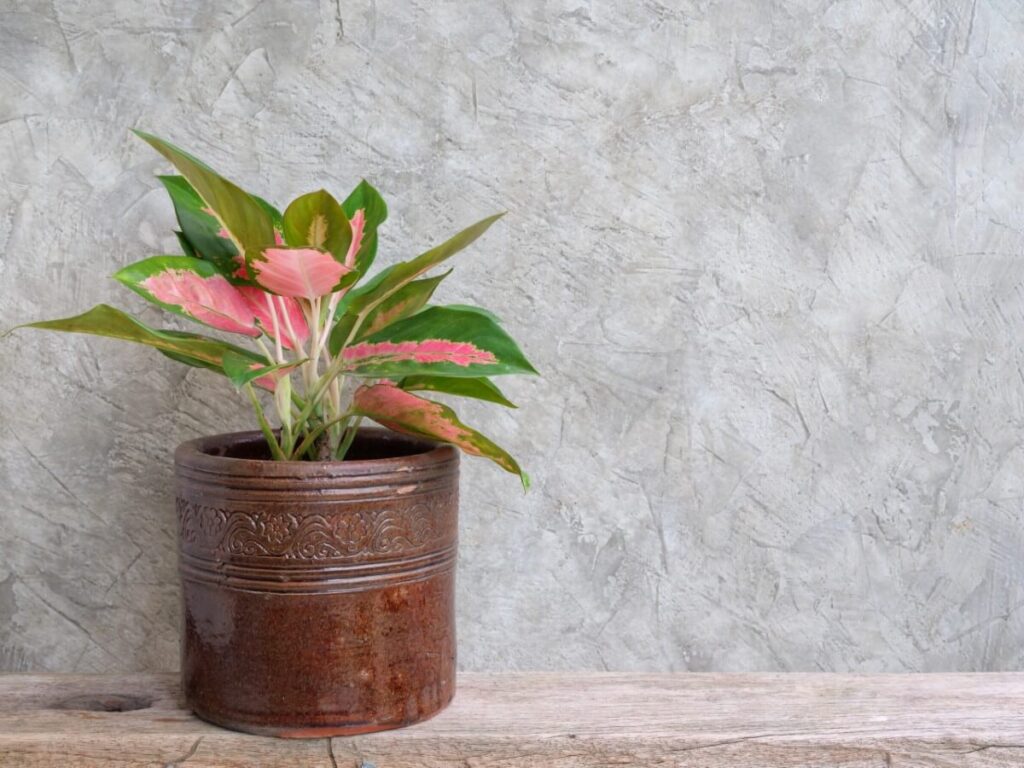
Chinese Evergreens are useful for decorating if you are interested in practicing Feng Shui at home. Feng Shui was originally used for the layout of crypts and official buildings, but now it is also applied to homes.
You start by finding the home’s north orientation with a compass. The map that determines how energy is generated and flows through the home is called the Bagua, and this diagram is directed across the home’s floor plan. Eight sectors are aligned with the cardinal directions of the compass. Once you’ve determined which room in the house corresponds to each sector, you can maximize its natural energy patterns with the right decor.
Live plants, in general, are recommended for placement in areas of the home associated with the wood element, which rules both the east and southeast sectors. The eastern part of the home is Zhen, or the sector that rules the family and all new beginnings. The southeast part of the home is known as Xun, which represents the wealth and financial success sector, but surprisingly not the career.
Instead, the career sector is in the North or Kan part of the home. This sector is aligned with the water element. It is the ideal location for the Chinese evergreen because of its association with this element. But the plant will also do well when placed to the east or southeast because of its more general association with the wood element.
Consider the care of the plant
Since Chinese Evergreens need relatively little specific care compared to some more delicate and demanding plants, they are quite easy to adapt to Feng Shui patterns.
However, they need special care to thrive and display beautiful patterns. Keep them away from direct light sources, which is relatively easy in northern rooms but can be more difficult in areas facing east and southeast.
Keep them away from drafts and cold temperatures as well. Make sure they have a source of moisture, or consider placing a small humidifier near the plant to keep it happy.
Where not to place Chinese evergreens in the home
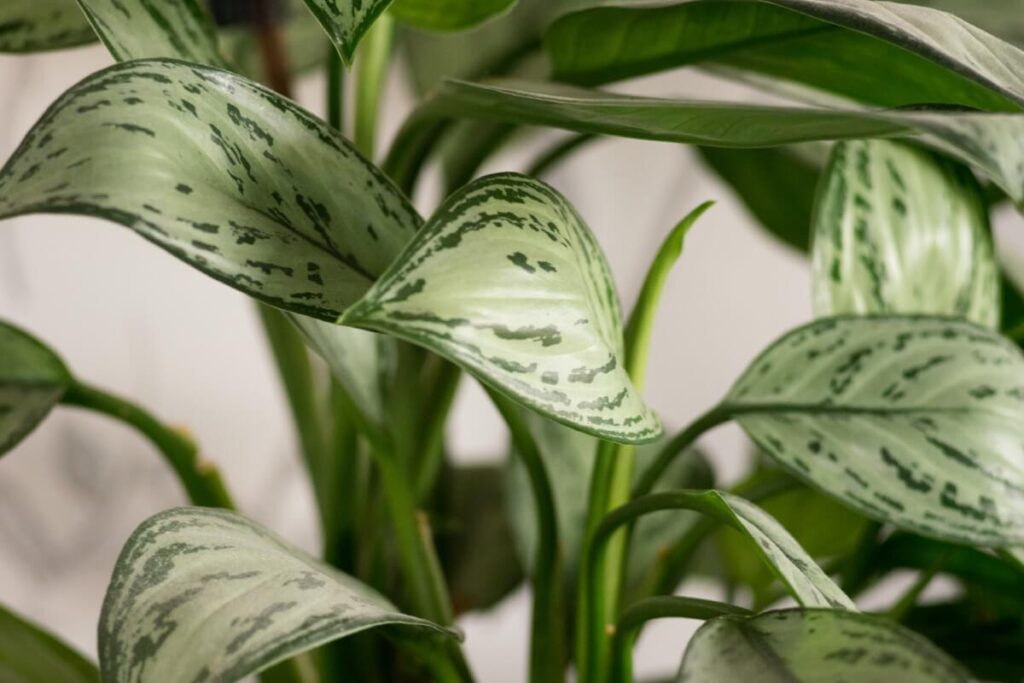
The center of the house is considered a space you should never place live plants in. This includes the Chinese Evergreens and their relatives. It is considered a wood element area and is weakened by the energy of both wood and water elements.
Placing live plants of any kind in the north-east and south-west parts of the home is also not recommended due to the conflict with the elements in these areas.
The bedroom is another area where live plants are not recommended in Feng Shui. Because they grow and generate energy all the time, they can be disruptive to the calming environment you want there.
For general care, you just need to avoid areas with strong light or drafts of dry air.
Where to Place Chinese Evergreens Outdoors
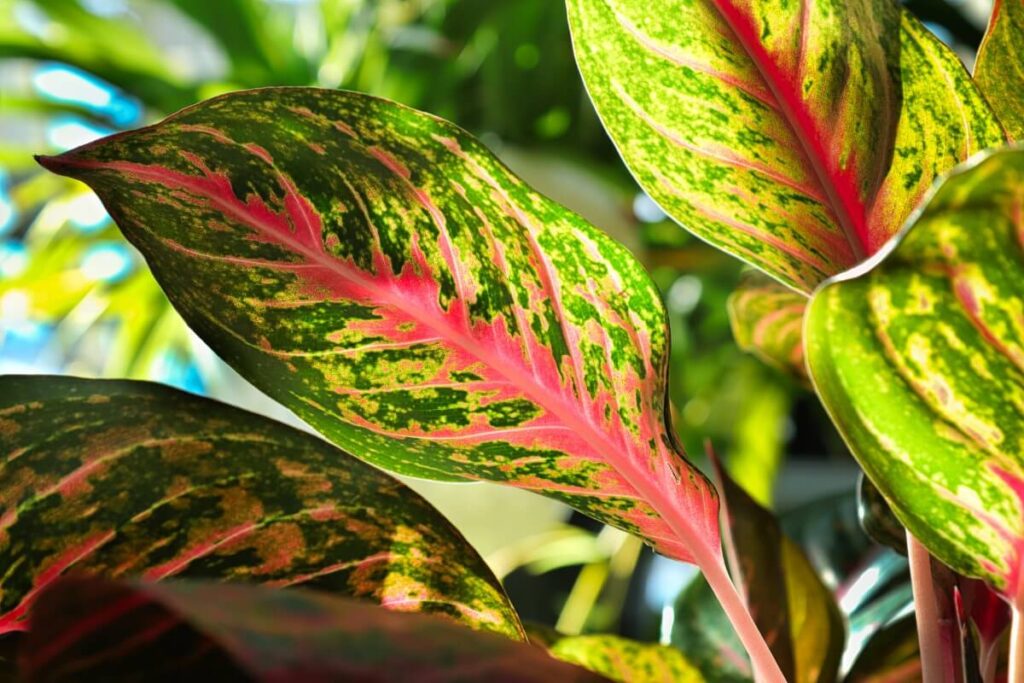
Chinese evergreen must stay above 50 degrees F at all times, so it is usually only brought outdoors in the summer and rarely planted outdoors in most climates. Keep it in a shady area where the moving sun does not burn it during the day as it is a plant that prefers indirect light.
Avoid placing it near a heat source that can dry it out, such as a wall that can heat it up too much during the day. Hanging baskets are a great choice for keeping them on a covered porch and away from bright light or wind.
Essential Chinese Evergreen Plant Care
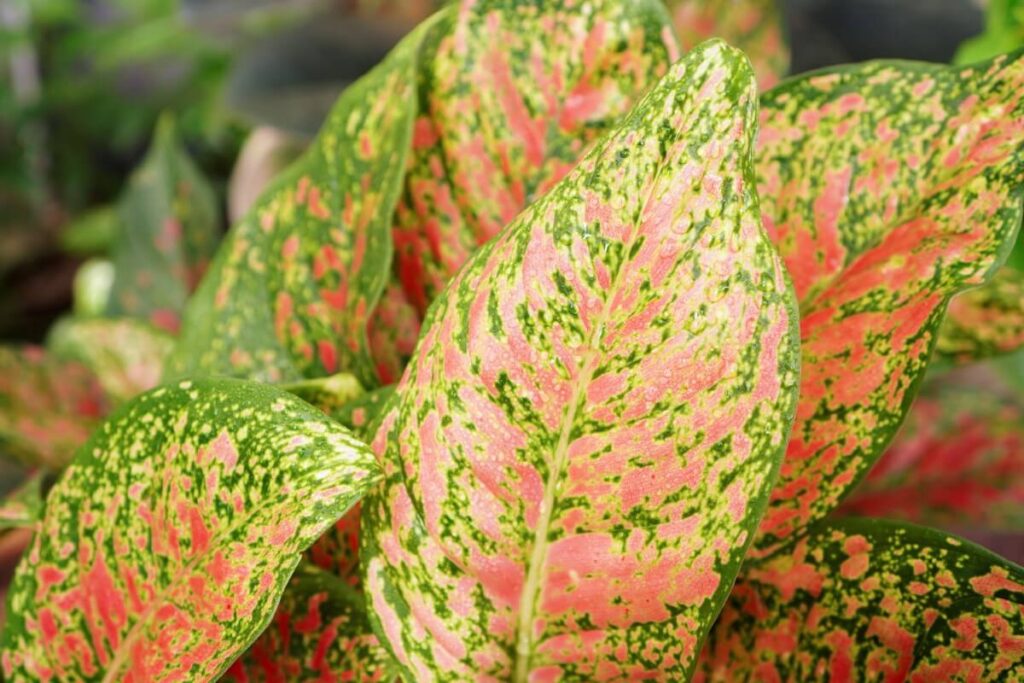
Chinese evergreens don’t need much to thrive. Give it a watering when the top inch or two of soil dries out completely and keep it in a humid room or near a humidifier for the best colored foliage.
Make sure the soil mix it grows in is very loose and well-draining as it can be prone to root rot.
Expose it to indirect light, such as light about two to three feet from a window. Temperatures must stay above 55 degrees F and below about 80 degrees F to keep the plant happy. If possible, aim for an average humidity above 60% around the plant.
Expect to repot your Chinese evergreen at least once a year for the first three years, after which it should reach maturity. Cut off dried leaves and flowers as they occur due to the aging process. Other pruning should not be needed. Fertilize it once or twice during the active growing season each year.
Where to Place Chinese Evergreens FAQ:
Which room is best for Chinese Evergreens?
According to Feng Shui, it can be placed in the north, south-east or east parts of the home. It is adaptable enough to thrive almost anywhere there is some light.
How far away from the window should a Chinese Evergreen be?
Keep this plant two to three feet from a window with direct light or one foot from a window that receives only indirect light.
Can I put my Chinese Evergreen in a corner?
Chinese Evergreens can thrive in a corner because it is protected from drafts, but only if there is enough indirect light.
Can Chinese evergreens thrive in low light environments?
This plant does not need direct light, but it does need strong enough indirect light from a nearby window or a bright artificial source.
Can Chinese evergreens withstand drafts?
Protect this plant from all drafts as both cold and hot air can cause it to wilt.
The last word
No matter what kind of name you use for this plant, it’s an easy-care choice for almost any part of the home. Choose a Chinese Evergreens plant if you want something to increase the flow of energy in the practice of Feng Shui. Not only does this plant have its own elemental associations due to centuries of cultivation in China, it is also adaptable enough to grow almost anywhere you decide to place it.
If you’re looking for your next Chinese Evergreen to add to your collection, see our in-depth guide to the best plant shops that supply Chinese Evergreens across the country.
 pyomn
pyomn



